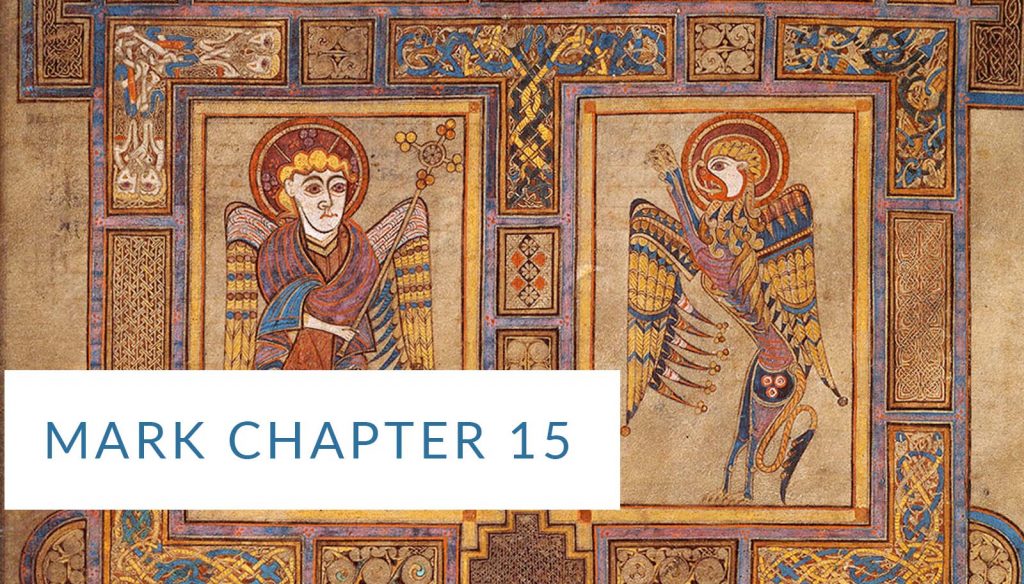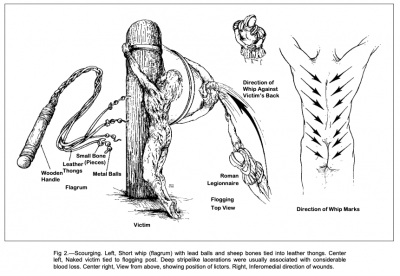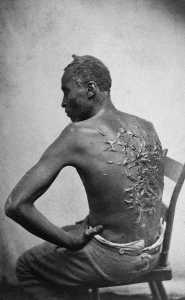This week’s readings are all from Mark 15-16. Click here to see a full listing of each day’s reading and the full chapter of Mark 15-16. Full readings of each day’s smaller segments of the readings will be posted on this site during the week.
Today's Reading
15 Because he wanted to satisfy the crowd, Pilate released Barabbas for them. Then, after he had Jesus flogged, he handed him over to be crucified.
16 So the soldiers led him into the palace (that is, the governor’s residence) and called together the whole cohort. 17 They put a purple cloak on him and after braiding a crown of thorns, they put it on him. 18 They began to salute him: “Hail, king of the Jews!” 19 Again and again they struck him on the head with a staff and spit on him. Then they knelt down and paid homage to him. 20 When they had finished mocking him, they stripped him of the purple cloak and put his own clothes back on him. Then they led him away to crucify him.
21 The soldiers forced a passerby to carry his cross, Simon of Cyrene, who was coming in from the country (he was the father of Alexander and Rufus).
Parallel Passages
- Gospel Parallels: Jesus Scourged and Mocked
- Gospel Parallels: Jesus or Barabbas
- Gospel Parallels: Pilate Hands Jesus Over to Be Crucified
- Gospel Parallels: The Way to Golgotha
Podcast
The Year in the Gospels podcast for this reading can be found here.
15 Because he wanted to satisfy the crowd, Pilate released Barabbas for them. Then, after he had Jesus flogged, he handed him over to be crucified.
Barabbas in Aramaic is Bar Abba, 'Son of the Father.' This is an interesting contrast to Jesus, who a chapter before prays and calls God, 'Abba.' Jesus is the Son of the Father, the true Messiah, who, rather than coming to conquer and destroy comes to serve and pour himself out. Barabbas, on the other hand, has attempted to lead a violent rebellion to overthrow Rome.
In the Gospel of Matthew, a early manuscripts have Barabbas full name as Jesus Barabbas, making this contrasting connection of the two 'sons' even more stark (Matt 27:16-17).
Scourging
This is from the article "On the Physical Death of Jesus Christ", written by William D. Edwards, MD, Wesley J. Gabel, MDiv, and Floyd E. Hosmer, MS, AMI, and published in the Journal of the American Medical Association in April 1986, 1455-1463:
Flogging was a legal preliminary to every Roman execution, and only women and Roman senators or soldiers (except in cases of desertion) were exempt. The usual instrument was a short whip (flagellum or flagellum) with several single or braided leather thongs of variable lengths, in which small iron balls or sharp pieces of sheep bones were tied at intervals (Fig 2). Occasionally, staves also were used. For scourging, the man was stripped of his clothing, and his hands were tied to an upright post (Fig 2). The back, buttocks, and legs were flogged either by two soldiers (lictors) or by one who alternated positions. The severity of the scourging depended on the disposition of the lictors and was intended to weaken the victim to a state just short of collapse or death. After the scourging, the soldiers often taunted their victim.
Medical Aspects of Scourging
As the Roman soldiers repeatedly struck the victim’s back with full force, the iron balls would cause deep contusions, and the leather thongs and sheep bones would cut into the skin and subcutaneous tissues. Then, as the flogging continued, the lacerations would tear into the under lying skeletal muscles and produce quivering ribbons of bleeding flesh. Pain and blood loss generally set the stage for circulatory shock. The extent of blood loss may well have determined how long the victim would survive on the cross.
Figure 2 referenced in the above article (click to enlarge):
The photo below is of a Gordon, who was a slave in the South. The scars are from beatings he received from his masters before his escape in 1863. The image is sometimes titled as 'Whipped Peter' and was part of a series of iconic images used to make the horrors of slavery known. It shows us what the result of scourging may have looked like and also that such horrific violence and torture does not only belong to 'ancient history' or other cultures, but has very much been present in our own.
You can read more descriptions of scourging and mocking from Josephus and Dio Chrysostom in the full post here.
I think the only positive thing I get from this section is considering why Simon of Cyrene is mentioned so specifically... We remember the context of Mark's writing as it was intended for his faith community, so this is a neat shout-out that further ties and legitimizes his words and his connection. Pretty neat!
Original Audiences
I am SO grateful for all of you who have reminded me to consider this perspective as we have read through Mark's Gospel. Mark was sharing this story with his audience, and that has bearing on how I take it in. The fact that I am not his original audience doesn't distance me from the value of this Gospel... it only helps me understand why Mark writes things and that is what I can draw even more value from!
How has this walk through Mark been new/different for you all???
Do we know anything about Pilate after this? His wife had a dream about Jesus and warned him not to get involved and in yesterday’s text is says that he knew that Jesus wasn’t guilty of anything but that the priests were just arresting him out of envy. To appease the crowd, he still releases Barabbas. I just wonder if there is anything known about him after… was he remorseful/ repentant, did it phase him at all?


